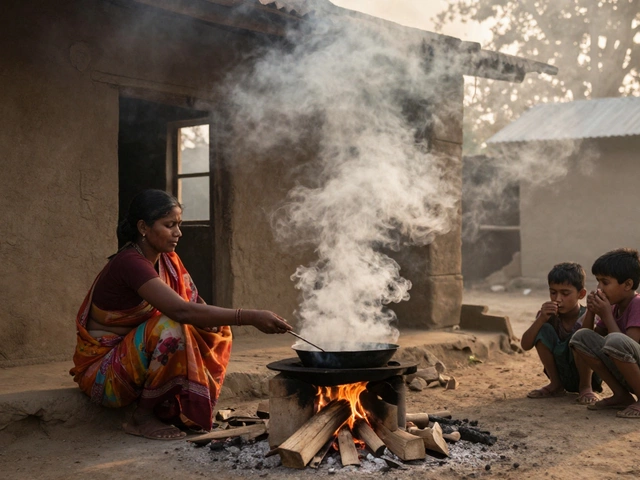You’d think a room full of experts could whip up the perfect public health intervention in an afternoon, but reality is way messier. Cities spend billions trying to solve problems that refuse to budge. Just look at the rise and fall of campaigns to reduce sugary drink intake or roll back smoking—they work only if you design them with laser focus on what people care about, not what you wish they cared about. Designing a public health intervention isn’t about copy-pasting old ideas. It’s about getting into the minds of the people affected and using real data to punch through old habits.
Sometimes, a small, unexpected tweak moves the needle. Other times, you’ve got to rip up what you thought would work and start again. And yes, there are frameworks, but the best teams ignore them when the situation calls for guts and creativity. Public health wins don’t come from just data dumps or dramatic warnings—they come from building trust, keeping things simple, and tracking every win and flop. If you want to design a public health intervention that sticks, you need to look behind every number and find the story.
Understanding the Problem and Community
Before unleashing any intervention, you need to really, truly understand what you’re dealing with. That means way more than checking the latest health department data. Start with listening. Who’s actually impacted by the problem? What do they say about it in their day-to-day lives? For example, let’s say you’re working on boosting childhood vaccine rates—national surveys and playful posters won’t help if local parents don’t trust clinics or if the nearest health center is an hour’s walk away.
One study done in Chicago found that when parents were asked why they weren’t vaccinating their kids, most didn’t mention vaccine safety at all. Their real problems were inconvenient hours, long waits, or can’t-miss work shifts. The lesson here? You’ll miss the target if you don’t listen straight from the source. Hit up schools, religious leaders, shop owners, and local influencers—anyone who understands the daily grind of the community. Remember, people’s lives are shaped as much by housing, transport, and money worries as by health facts alone.
Gather as much info as you can without making folks roll their eyes. You’re not only checking numbers like disease rates or ER visits; you’re mapping out the roots of the problem and the possible obstacles ahead. And don’t forget to use qualitative data—interviews, focus groups, short anonymous surveys—all can reveal what dry statistics miss. Want to know how fast you’re moving? Check out this table showing how long common assessment steps actually take:
| Assessment Task | Typical Time Needed |
|---|---|
| Initial Data Gathering | 2–6 weeks |
| Community Consultation | 1–3 months |
| Stakeholder Analysis | 2–4 weeks |
| Literature Review | 2–8 weeks |
Why bother with all this digging? Because there’s no single solution that works everywhere. One city found that opening school gyms on weekends for free led teens to exercise more and eat better—a fix no outsider would’ve suggested. Go local and go deep. That’s just the start; collecting the right facts makes every dollar you spend count more.

Designing Your Intervention: What Works, What Doesn’t
Designing a public health intervention can be as creative as launching a startup—except the stakes are higher. The best programs aren’t massive, expensive campaigns. They’re the small, smart strategies that match local needs with evidence-based action. Once you know what’s really behind the problem, you move on to building your plan. Here’s what makes a good intervention stand out from a flop:
- Sharp Goals. Be specific. "Reduce teen smoking by 20% in two years" is a real goal. "Promote wellness" is fuzzy and dead in the water.
- Solid Evidence. Steal shamelessly from what works. If text message reminders helped boost mammogram appointments in Texas by 40%, maybe they’ll work in your city—but only if people read texts there.
- Target the Right Group. Spray-and-pray approaches waste money. If mothers in a certain neighborhood are least likely to get prenatal care, talk to them directly instead of everyone in the city.
- Get Buy-in Early. Bring in community leaders before you launch. If you fumble this step, the intervention may never really get off the ground.
- Emphasize Simplicity. People juggle a hundred things a day. The easier you make the healthy choice, the better. NYC’s ban on giant sodas? Didn’t work—the messaging was confusing and people just bought two drinks instead.
Ideas can start huge and then get whittled down. Sometimes, interventions are a patchwork: maybe you’re giving out free mosquito nets, while also delivering fun, quick info sessions in hair salons or barbershops. Or maybe you use social media influencers in neighborhoods where trust in officials is low. Think about layering strategies—a single prong is rarely enough.
If you can, set up a small test before going national. Pilot programs let you spot weird problems early. London’s famous anti-smoking TV ads worked well citywide because they first tried them out in a handful of clinics to see how people responded. Testing in the wild beats testing in a board room any day.
Money matters, too. Be realistic about your budget. Maybe you’ve got a million-dollar pot, or maybe you’re scraping by. Either way, channel as much as possible into direct community action. Printing 10,000 flyers that end up in the trash never helped anyone.
Above all, build flexibility into your program. Odds are, something won’t go as planned—a popular doctor might leave, a political crisis might steal the spotlight, or a new health scare could upend priorities. Adapt fast. Don’t cling to the original plan if the ground shifts under your feet.
Evaluation and Learning: Tracking Progress, Fixing Mistakes
No matter how clever your plan is, you won’t know if it’s working unless you measure everything that matters. And I mean everything. Track not only the big outcomes but also the smaller milestones. If your goal is to cut new HIV infections by half, are more people getting tested? Are local clinics staying open later? Did the hotline calls spike after your new ad launched?
Set clear markers before you start. Here’s a quick, practical approach:
- Pick a few important metrics—like hospital visits, vaccination rates, or behavior changes—and track them regularly.
- Use before-and-after surveys. Did people’s attitudes or knowledge actually change? Sometimes info campaigns quadruple awareness but barely budge actual habits (the famous handwashing posters in schools, for instance?)
- Gather feedback in real time. Don’t just wait for exit surveys. WhatsApp groups, quick pulse polls, or even old-school suggestion boxes can pick up trouble spots you’d otherwise miss.
- Share results—warts and all. Interventions often stumble before they run. Opening up about what failed helps the team adjust quickly and proves you’re not just fluffing up numbers for your funders.
- Knit evaluation into daily work, not as an afterthought. You want people to course-correct in the moment, not just after it’s too late.
Lots of interventions trip up because tracking gets half-hearted or too complicated. It helps to have a table showing common ways public health programs are measured:
| Measurement | Data Source | How Often? |
|---|---|---|
| Participation Rates | Sign-in sheets, digital logs | Weekly/Monthly |
| Behavior Change | Surveys, health records | Quarterly/Annually |
| Community Feedback | Focus groups, digital feedback | Continuously |
| Health Outcomes | Hospital data, reports | Annually |
The golden rule: Never treat evaluation like a report card for school. Use it as a road map for change. And remember—public health change happens slowly. Smoking rates in the U.S. dropped from 42% in 1965 to around 12% by 2024, but it took relentless evaluation, reinvention, and keeping an eye on what the data really meant.
No matter how smart your original plan was, you’re bound to get a few calls wrong. That’s not just OK—it’s healthiest when you fix mistakes openly. Your community will spot fakes a mile away. Learn fast, celebrate small wins loudly, and give credit where it’s due. That’s how intervention designs go from theory to real-world impact. Only then do you turn a scattershot effort into something that sticks and changes lives for good.





